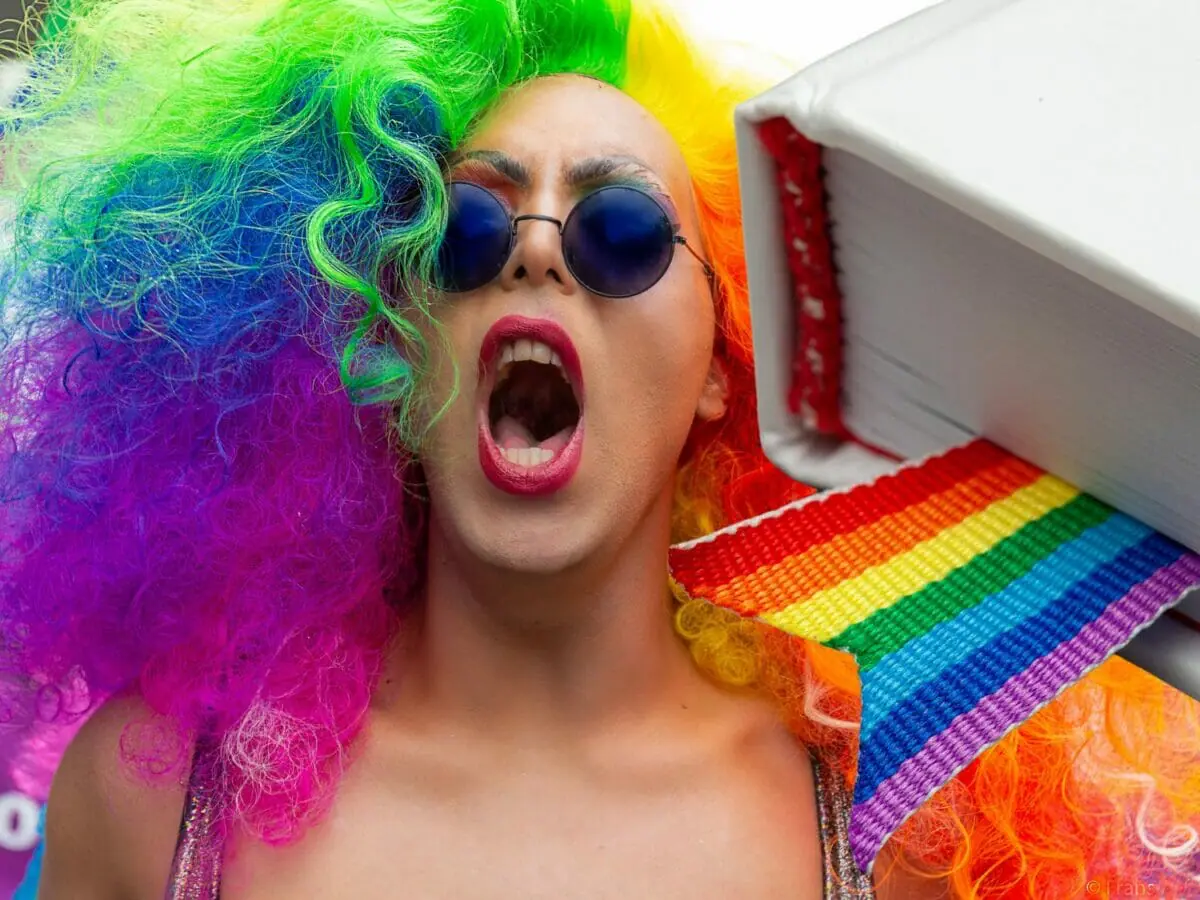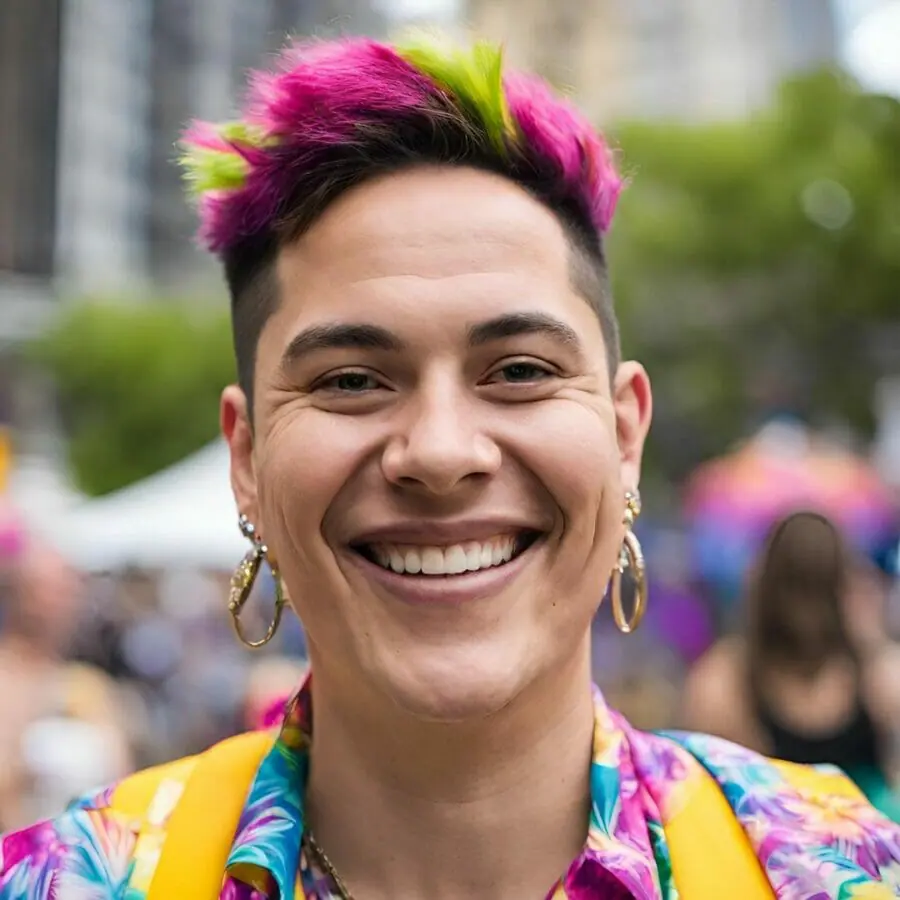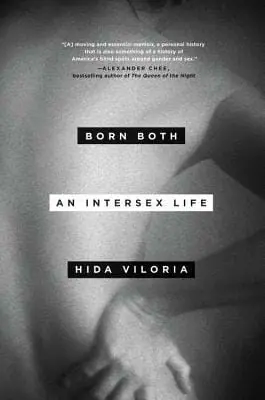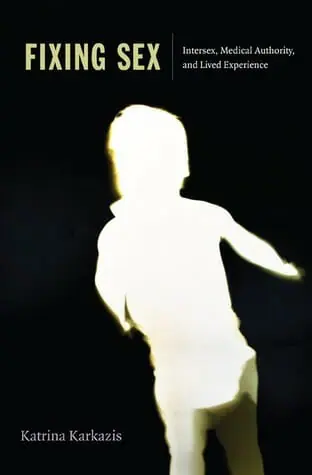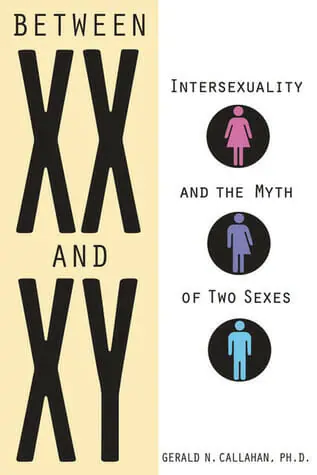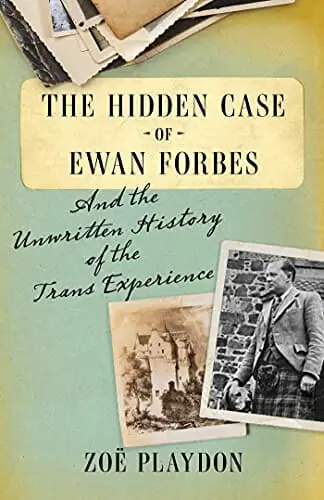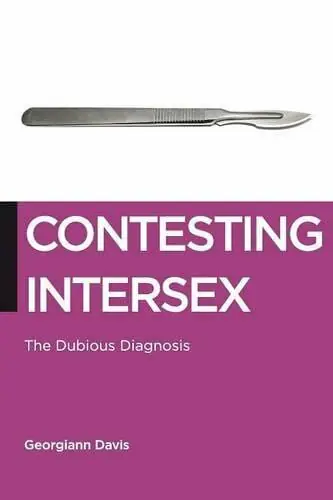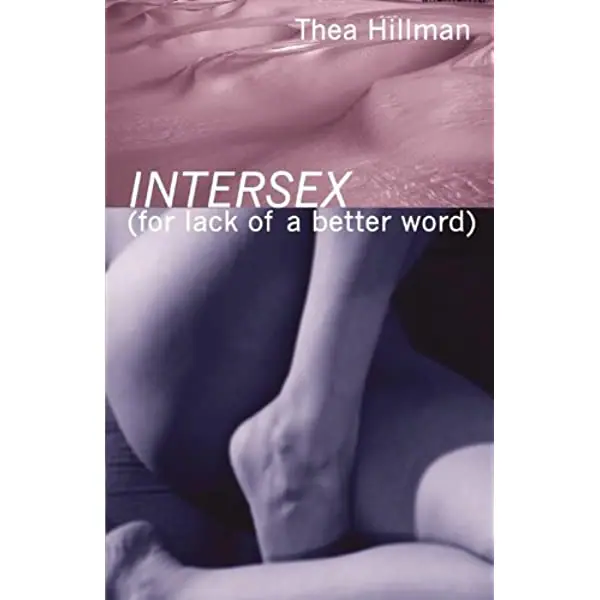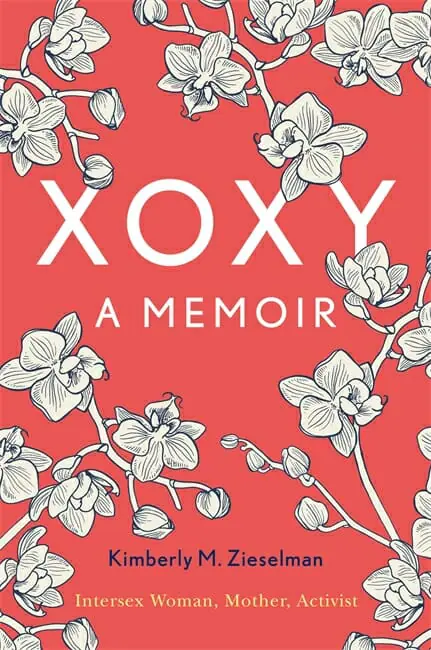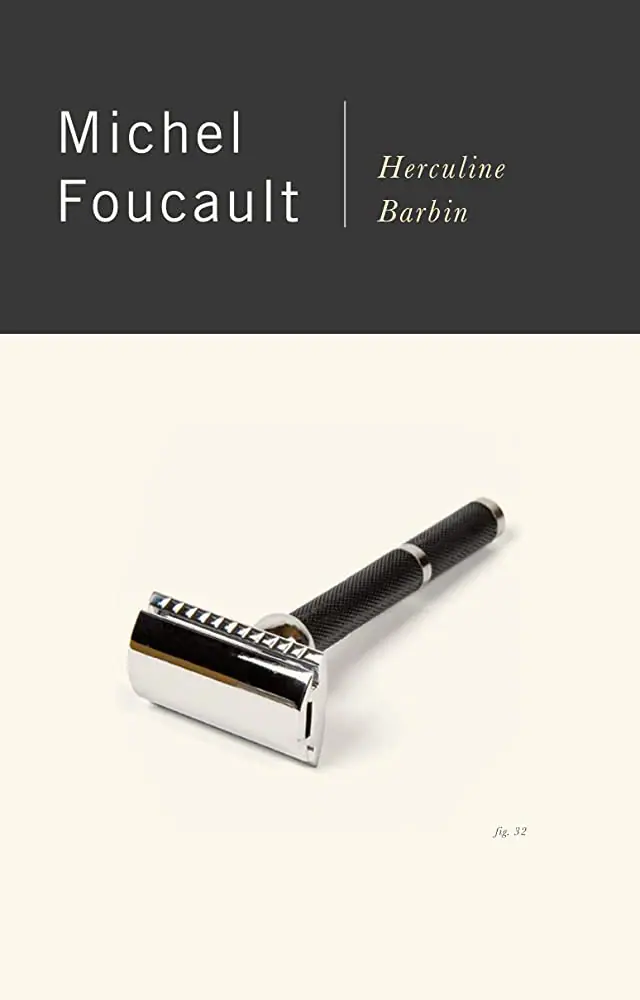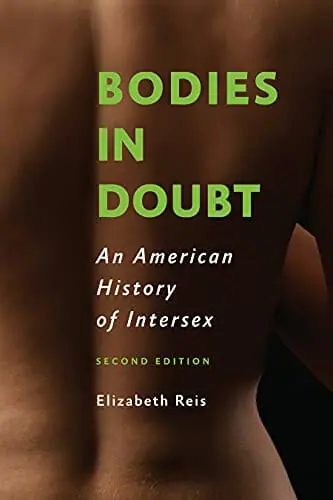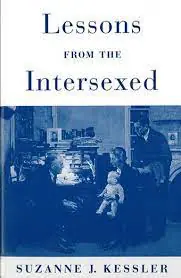Did you know that 1 in 100 people have bodies that deviate from being 100% male or female? Intersexuality is one of the most natural things but is rarely treated as such. The term intersex applies to many conditions, from having male and female genitalia to having mosaic chromosomes. Intersex came into existence only in the early 20th century.
Until then, the term “hermaphrodite” was used to refer to people who did not genetically or biologically conform to one gender. This word, now considered derogatory, was derived from Greek mythology. Hermaphroditus was the son of Aphrodite and Hermes. A water-nymph, Salmacis, fell in love with him and prayed that they should never be separated. The Gods answered her call, quite literally, and joined them in one body.
Because of applying to a range of gender scenarios, intersex has historically baffled the medical community. Combined with heteronormative ideals, intersex people have been at the receiving end of medical abuse and neglect. Parents of intersex children also tend to be clueless about dealing with the “issue”. The lack of awareness and knowledge on both sides has contributed to widespread corrective surgeries on intersex infants.

However, the intersex community is now speaking up. The ten courageous books in this article are a testament to that. Most of these books are written by own voice authors. Therefore, you can be assured that these accounts are authentic.
We suggest that you brace yourself for these 10 best intersex books because they are raw and profound. They talk about things that have been kept under wraps for ages. Things that are not easy to write about.

Don't have time to read them all? Why not try listening to them? Audible is a great platform for listening to audiobooks because it offers a wide selection of books, including bestsellers and exclusive content. With Audible, you can listen to your favorite books on-the-go, whether you're commuting, working out, or doing household chores.
The Audible app also has features like adjustable narration speed, a sleep timer, and the ability to create bookmarks, making it easy to customize your listening experience. Additionally, Audible offers a membership program that gives members access to a certain number of audiobooks per month, making it a cost-effective option for avid listeners.
A great resource for people who want to maximize their time and make the most out of their daily activities. Try a free 30-day trial from Audible today, and you'll get access to a selection of Audible Originals and audiobooks, along with a credit to purchase any title in their premium selection, regardless of price (including many of the books on this list!)
For ebook lovers, we also recommend Scribd, basically the Netflix for Books and the best and most convenient subscription for online reading. While they have a catalog comprising over half a million books including from many bestselling authors, for some of the books on this list, you'll still have to purchase individually - either as a paperback or eBook to load on your Kindle - due to publishing house restrictions.

In this article we will cover...
- Born Both: An Intersex Life by Hida Viloria
- Fixing Sex: Intersex, Medical Authority, and Lived Experience by Katrina Karkazis
- Between XX and XY: Intersexuality and the Myth of Two Sexes by Gerald M. Callahan
- The Hidden Case of Ewan Forbes by Zoe Playdon
- Contesting Intersex: The Dubious Diagnosis by Georgiann Davis
- Intersex by Thea Hillman
- XOXY: A Memoir by Kimberly M. Zeiselman
- Herculine Barbin: Being the Recently Discovered Memoirs of a Nineteenth-century French Hermaphrodite by Herculin Barbin
- Bodies in Doubt: An American History of Intersex by Elizabeth Reis
- Lessons from the Intersexed by Suzanne J. Kessler
Born Both: An Intersex Life by Hida Viloria
When Hida Viloria was born, the doctor observed that they had ambiguous genitalia. Since their father refused a correction surgery, they were assigned females at birth (the prominent organs) and raised as girls. It was only in their 20s when they came across the term “intersex” that they realized their gender.
But unfortunately, many people she met from the intersex community were scarred by surgeries and treatments. They had been operated on to correct their genders. Viloria went through the painful journey of gender discovery and what it means to be intersex alone.
In this book, they write about their experiences and flirtations with gender aiming to be a strong voice for the intersex community. The second half of the book talks about their years of activism.
Viloria shares with honesty about their troubled childhood. Owing to her abusive father, they did not have a peaceful home. As a young adults, they talk about the time they were drugged and raped at a bar. Viloria does not spare any details of the gruesome parts of their journey, making this book an emotional roller-coaster.
They also write about the time they discovered they were attracted to women. Viloria also switched their gender identity multiple times. Raised as a girl, they later chose to be an androgynous person and even a man for a brief period.
Ultimately, they realized they were neither men nor women and existed somewhere in between. Reading about this exploration would be nothing less than a revelation for an intersex child or a teen confused about their gender. This is a great book for anyone who wants to learn what it means to be intersex.
Fixing Sex: Intersex, Medical Authority, and Lived Experience by Katrina Karkazis
What happens when a baby is born with “ambiguous” genitalia? Doctors and parents decide which set of organs to go with and surgically alter the baby’s genitalia. If this is not horrifying, what is? Cosmetic surgery is performed on infants who have no clue about what’s being done to them.
In Fixing Sex, the author, Katrina Karkazis, writes about the history, diagnosis and treatment of hermaphroditism. This book is based on thorough research. Karkazis approaches the subject from myriad angles. No one person or institution is labeled bad. Instead of pointing to any entity as the root cause of the troubles hurled at intersex people, she presents all the facts and leaves it up to the reader to judge.
Karkazis patiently unpacks all the layers behind the abuse of intersex people. For instance, a parent who subjects her child to multiple genital examinations and surgeries over the years confesses that she did not know how to stop it without denying her child life-saving medical treatment.
The parent is not the villain. She is just trying to do what she thinks is best for the child. The book also has accounts of doctors that feel out of depth regarding intersex infants. Their medical training did not equip them to handle genitalia that is not male or female.
This book is not an easy read. It presents the systemic abuse that intersex people face in all its excruciating glory. But it is an honest and dependable account of how intersex individuals have been treated by society and why it is not okay. It is a cry for help that cannot be ignored.
Between XX and XY: Intersexuality and the Myth of Two Sexes by Gerald M. Callahan
What makes a man or a woman? Is it their genitals? Chromosomes? Choice? Environment? Even experts and doctors are not very clear on this. However, what is clear is that gender is not just confined to males and females. This is exactly what the author addresses in this book. Gerald M. Callahan approaches the debunking of the gender binary through intersexuality.
He touches upon factors that determine gender both within and without the human body. The contribution of genetic makeup, chromosomes and DNA to the gender of a person is discussed in detail. Callahan also writes about the impact of culture and society on gender.
He also gives examples of intersexuality in animals by giving evidence of hermaphroditic animals. This strengthens the argument that intersex is not a condition that needs to be fixed. It is just a natural phenomenon.
The book also includes case studies of many intersex individuals that reveal the plights they are subjected to. These stories are heartbreaking tales of injustice and discrimination but also of courage and strength. These personal narratives are a nice touch to the book, giving us a realistic picture of what it means to be intersex.
This book also highlights the inadequate medical understanding of intersex bodies. Medicine aims to treat this “condition” by pumping hormones or corrective surgeries instead of trying to understand them. All in all, Between XX and XY is a great primer to understanding intersexuality. Especially recommended for allies and parents of intersex children.
The Hidden Case of Ewan Forbes by Zoe Playdon
The story of Ewan Forbes is an interesting piece of history for the LGBT community. He was born in 1912 to a wealthy family in Scotland, holders of a baronetcy. He was assigned female at birth but never conformed to the gender. He was rarely seen in the traditional girls’ costumes. His mother supported his gender identity from a very young age.
She even procured artificial testosterone during his teenage years. Ewan changed his birth certificate to reflect his gender as a man. Shortly after that, he got married and settled into a comfortable life. Until his older brother died in 1965, being the next male heir, q eEwan inherited all the family lands and baronetcy. This irked his cousin John who contested in court that Ewan was not a man.
At a great personal cost and humiliation, Ewan fought the case and won! The victory, however, was short-lived. While Ewan led a happy and peaceful life, this case was deliberately hidden. The author, Zoe Playdon, does a remarkable job of vividly reconstructing this lost story.
However, many historians and scholars think that Ewan was intersex rather than transgender. There are a couple of arguments for this. One, during the early and mid-20th century, the term transgender was used to describe intersex people as well. Two, we know that no less than twelve doctors examined Ewan and all of them gave the verdict that his gender is “ambiguous” and the evidence is inconclusive.
The story of Ewan Forbes is a crucial piece in the history of intersexuality in the UK. It also upholds the property rights of intersex and trans communities. This landmark story is a must-read!
Contesting Intersex: The Dubious Diagnosis by Georgiann Davis
This is an academic book summarising an empirical study conducted by the author. However, the author, Georgiann Davis, uses accessible language. She wanted everyone to be able to read and understand the book. Georgiann Davis is intersex herself but did not discover her identity until much later in her life.
Even though doctors realized that she had the XY chromosome when she was a teenager, they hid it from her. What is surprising is that Davis’ experience is not unheard of. Many intersex individuals have decisions made about their bodies without their consent and sometimes without their knowledge.
In this book, Davis interviews intersexual adults, parents of intersex children, medical experts on intersex and mental health professionals. Through these, Davis aims to shine an unyielding light on the effects of unnecessary and often unethical medical interventions on the intersex community.
She also adds her own experience to drive home the point. In the process, Davis highlights the language used to refer to intersexuality. It is typically handled as a medical condition and viewed as a Disorder of Sex Development (DSD).
While this book is based on a study, it is also deeply personal. Davis breathes life into dry-academic language by adding her own story. Some of the interviews are insightful to read as well. Contesting Sex is an educational read about the medical handling of the intersex community. Intersex or not, we are sure you can learn a lot about gender, sexuality and the challenges faced by those who do not conform to the gender binary.

Intersex by Thea Hillman
The author of Intersex, Thea Hillman, is a queer, intersex woman and activist. She is also a poet and writer. In this book, she includes a collection of essays, poems and journal entries about her life as an intersex individual. In these essays, Hillman talks about the history of intersexuals and how they have been historically objectified.
She criticizes some of the mainstream literature that normalizes this objectification. She also writes about how suffocated, lonely and confused she felt growing up as an intersex child. Even though she received the necessary medical attention, she did not get the emotional support she craved.
She speaks of how she wishes her mother had supported her better. This is also a reflection of how little we know about intersexuality. Even if we have the best intentions and want to help, not many of us know what to do.
Hillman writes about her own experiences, but her tales give visibility and validation to many from the community. Many of her seemingly mundane encounters can be super relatable. She also addresses the overlap between the trans and intersex communities but does not offer a clear distinction. These lines are not as clear, are they?
The important thing is that we accept people for who they are and do not get too caught up in labels. Hillman uses her poetic genius to make this memoir a poignant piece. This is one of the rare own voices books in intersex literature. Pick this up, and we assure you, you will not regret it!
XOXY: A Memoir by Kimberly M. Zeiselman
Kimberly M. Zeiselman is your regular suburban housewife and mother. Or so she thought until she discovered that she was intersex at 41! She learned that this humungous aspect about her was intentionally kept a secret. Since then, she came out to her family and has become an internationally recognized human rights defender and activist.
In this memoir, Zeiselman switches between adulthood and childhood, giving us a before and after picture of her life. She writes about her struggle with her identity. While identity is complex for everyone, being an intersex woman brings challenges. Here, she emphasizes the benefits of having a community of people who understand exactly what you are going through.
Hospitals can be very hostile places for intersex individuals. Zeiselman divulges her experiences with doctors who treated her as a specimen and the PTSD she suffered after certain medical interventions. But sadly, this is not news. Medical trauma is too familiar to the community.
In the book’s second half, Zeiselman charts her journey to becoming an intersex activist. She touches upon the history of intersex activism and the progress made so far. She also condemns the ostracization of intersex people by the LGBT community.
This book is more than a memoir. It is an advocacy for a better quality of life for intersex people. And it is full of hope for future generations of intersex kids. In the mood for a fun, interesting and eye-opening memoir?
Herculine Barbin: Being the Recently Discovered Memoirs of a Nineteenth-century French Hermaphrodite by Herculin Barbin
Do you ever wonder how hermaphrodites were treated before the widespread LGBT awareness we have today? The short answer is- not well. This book holds testament to that. Herculin Barbin is perhaps the first own voices author of an intersex memoir. This book is a translation of her journal entries during her short, tragic life.
She was born in France in 1838 and was assigned a female at birth. Coming from poverty, Barbin attended a Catholic school where she performed well academically. She was well on her path to becoming a schoolteacher, but with one obstacle- she fell in love with another girl. And thus began a secret affair between the two girls.
Around the same time, Barbin discovered that her body was different from other girls. When the affair came to light, she was re-examined by doctors and declared a man at the age of 22. Having lived her entire life as a woman, Barbin had no clue about how to be a man. Being estranged from his lover broke Barbin and started his downward spiral. His education and skills were useless in securing a job.
Barbin was a religious person. His faith was the only solace after his legal transition, but it was not enough to save him. His life ended in a tragic suicide at 30. A manuscript of his journal entries was found next to the body.
This book is divided into four parts- the foreword, the memoirs, the endnotes and a novelette. The memoirs are easily the heart of the book. Barbin’s writing is evocative and raw. His descent into depression is heartbreaking to read. Nevertheless, intersex history is incomplete without this book.
Bodies in Doubt: An American History of Intersex by Elizabeth Reis
This book is exactly what it sounds like, a history. Elizabeth Reis writes about how doctors and society have treated intersex individuals since colonial times up to the 21st century in the U.S. Is it a surprise that during the colonial period, hermaphrodites were viewed as monsters, a punishment for their mother’s sins?
Throughout history, they have been molded to fit into the heteronormative ideas of marriage. Their identity and preference did not matter. They have been bestowed little autonomy and dignity. Reis also writes about the increase in the surgical treatment of intersexuals since the Cold War period.
Even with increasing awareness of gender fluidity and acceptance of queerness, intersex people continue to be ostracised. They do not get their due attention and acceptance within the LGBT community.
Reis delves deep into the influence of societal expectations, the gender binary and heteronormativity on doctors and surgeons. What else can explain “corrective” surgeries on newborn infants? How ethical are these surgeries? Should babies be operated on, or should any “repair” be put off until the child is older and can decide for themselves?
This book covers a long period, giving us a clear picture of how things have improved (or not) for the intersex community. In the second edition, Reis has added two new chapters that address the more recent changes in attitudes and medical and legal practices concerning intersexuals. If you are looking for a comprehensive history of how intersexuals, this is the book for you!
Lessons from the Intersexed by Suzanne J. Kessler
By now, you know that “correcting” intersexuality in infants is very common. At first sight of genitals that are not male or female, and hence “ambiguous”, doctors are thrown into a frenzy to save the child by performing invasive, unethical procedures. What are the reasons for that? In this book, Suzanne J. Kessler writes about the motivations of parents and doctors in treating intersex children.
She also writes about alternate, healthier methods of accepting intersexuality and giving agency to the individual. Kessler bases her arguments on extensive research. She interviewed pediatricians and endocrinologists on their experiences with intersexuality in infants. She also sought out the opinions of parents of intersex children, an often unheard group.
Though many parents are clueless when they first learn that their child is intersex, Kessler shows that some parents can accept it. She highlights the importance of education and cares that each family with an intersex child needs to do what’s best for the child. Kessler goes on to talk to adults who received treatment as intersex children.
She shrewdly combines this data with medical records to propose new approaches for doctors to take in such cases. Physicians play a pivotal role in the entire decision-making process of treating an intersex infant. Their language and opinions influence parents too. Therefore they must be equipped with the knowledge, language and tools to deal with intersexuality.
Through these recommendations, Kessler urges us to abandon the two-gender paradigm and rethink gender, genitals and sexuality. This book is a masterclass for families and physicians dealing with intersexuality and supporting their loved ones.


